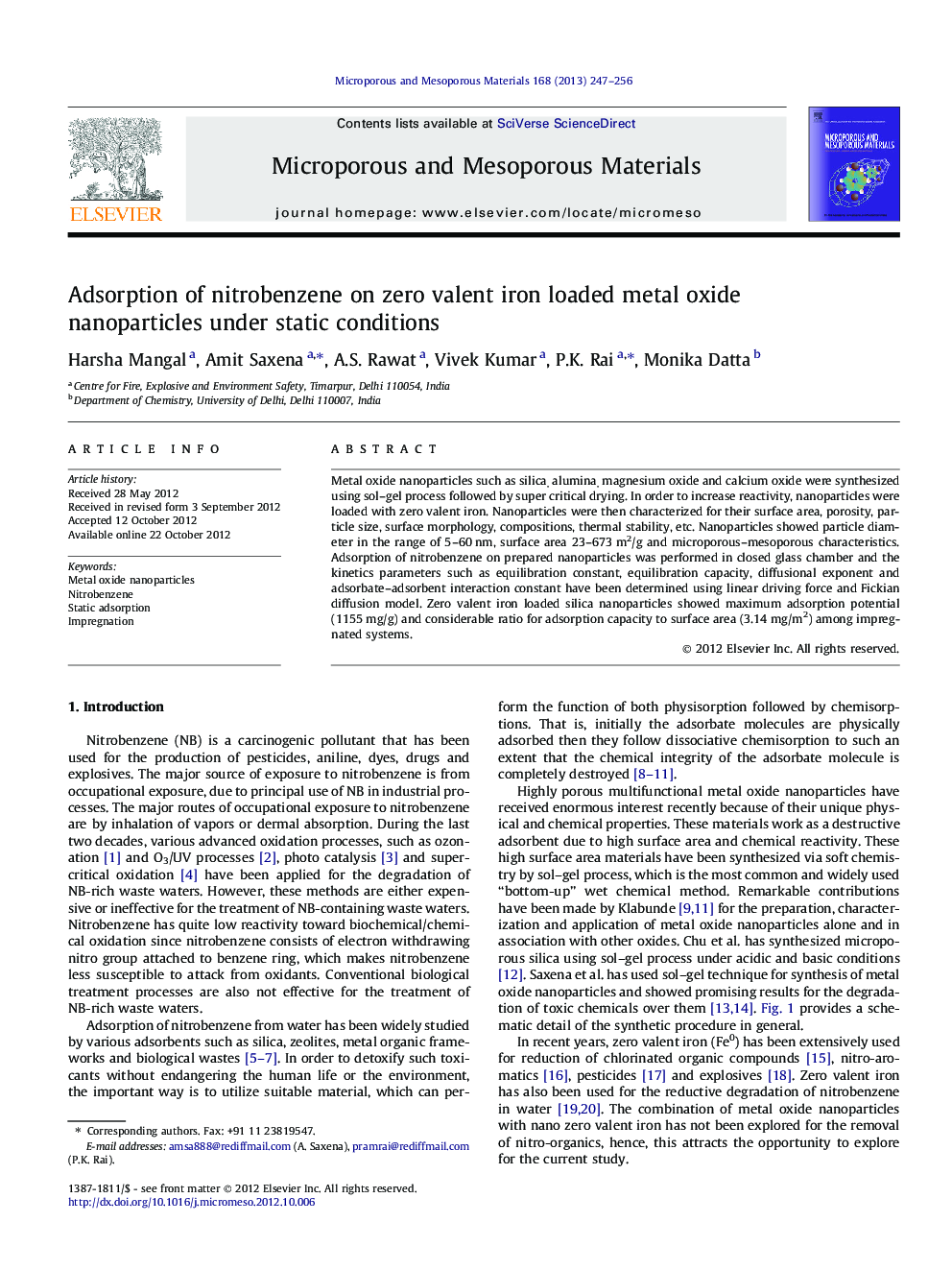| Article ID | Journal | Published Year | Pages | File Type |
|---|---|---|---|---|
| 73683 | Microporous and Mesoporous Materials | 2013 | 10 Pages |
Metal oxide nanoparticles such as silica, alumina, magnesium oxide and calcium oxide were synthesized using sol–gel process followed by super critical drying. In order to increase reactivity, nanoparticles were loaded with zero valent iron. Nanoparticles were then characterized for their surface area, porosity, particle size, surface morphology, compositions, thermal stability, etc. Nanoparticles showed particle diameter in the range of 5–60 nm, surface area 23–673 m2/g and microporous–mesoporous characteristics. Adsorption of nitrobenzene on prepared nanoparticles was performed in closed glass chamber and the kinetics parameters such as equilibration constant, equilibration capacity, diffusional exponent and adsorbate–adsorbent interaction constant have been determined using linear driving force and Fickian diffusion model. Zero valent iron loaded silica nanoparticles showed maximum adsorption potential (1155 mg/g) and considerable ratio for adsorption capacity to surface area (3.14 mg/m2) among impregnated systems.
Graphical abstractHigh surface area metal oxide nanoparticles synthesized using aero-gel process and loaded with zero valent iron have been explored for the adsorptive removal of nitrobenzene. The kinetics parameters such as equilibration constant, equilibration capacity, diffusional exponent and adsorbate–adsorbent interaction constant have been determined using linear driving force and Fickian diffusion model. Zero valent nano iron loaded silica nanoparticles showed maximum adsorption potential (1155 mg/g) and significant ratio for adsorption capacity to surface area (3.14 mg/m2) among impregnated systems.Figure optionsDownload full-size imageDownload as PowerPoint slideHighlights► High surface area SiO2, Al2O3, MgO and CaO were synthesized using solgel process. ► Metal oxide nanoparticles were loaded with ferric chloride and reduced to iron. ► Removal of nitrobenzene on impregnated metal oxides was carried out. ► Iron loaded silica nanoparticles showed maximum adsorption potential (1155 mg/g). ► Physisorption accompanied by chemisorption took place on iron loaded samples.
